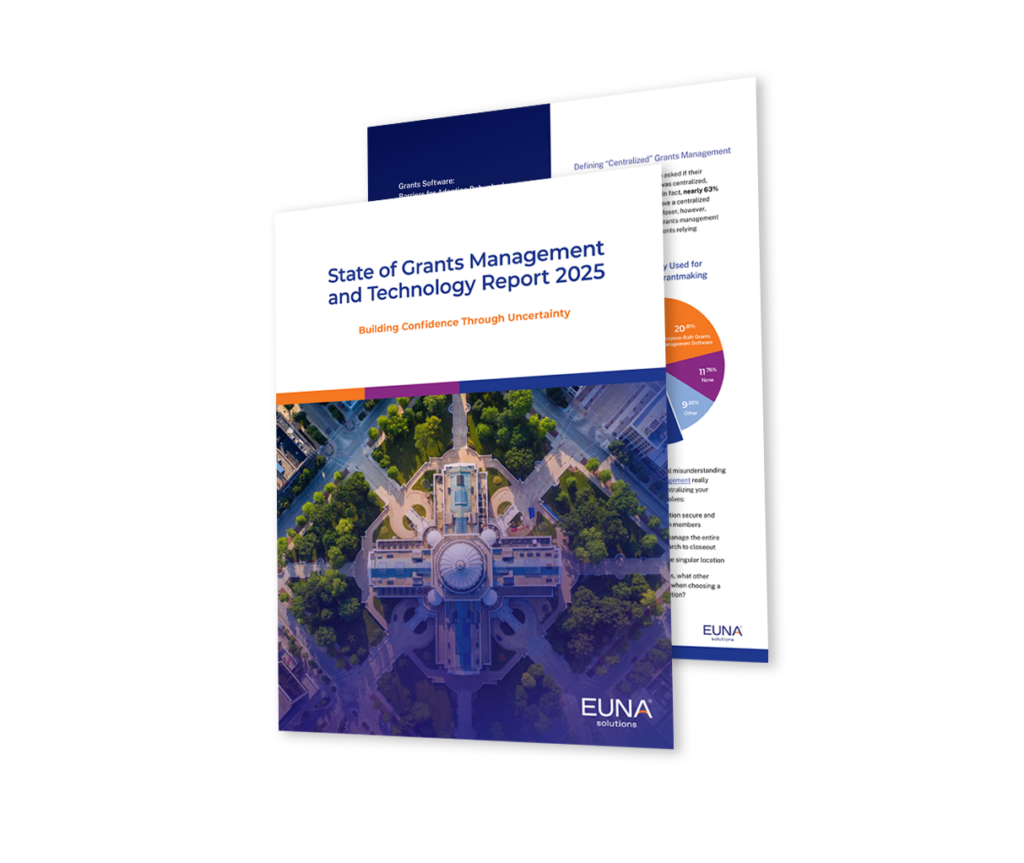Is your current grant management process causing delays, inefficiencies, or compliance risks? As your grant portfolio grows, decentralized systems and disconnected workflows can make it harder to manage funding and stay on track.
Why Centralization Matters for Public Sector Grant Management
Decentralized grant management can fragment data, duplicate effort, and increase the risk of compliance failures. Centralization brings everything from applications and awards to budgets and reporting into a single, unified system. When teams work under one centralized process, you can track every dollar from award to outcome, simplify audits, streamline reporting, increase collaboration, and focus on mission-driven impact.
Download our free checklist to uncover the top signs it’s time to centralize your grant lifecycle. You’ll assess your organization across four critical areas:
-
Process Management: Are your grant workflows standardized and efficient?
-
Compliance & Reporting: Are you consistently meeting all grant requirements?
-
Resource Management: Are staff and funding fully aligned with strategic priorities?
-
Strategic Indicators: Are you tracking performance metrics and mission impact effectively?
By identifying key operational gaps, this checklist helps you evaluate where change is needed and outlines the next steps for implementing centralized grant management systems and processes. With the right foundation, your team can reduce administrative burdens and focus on delivering measurable program outcomes.
Your Roadmap to Centralized Grant Management
If the challenges in the checklist sound familiar, your organization has likely outgrown its current approach. Transitioning to a centralized process doesn’t happen overnight, but practical strategies from GovTech leaders like Euna Solutions can guide the shift. This transformation will improve how your teams collaborate, share data, and manage accountability.
Here’s where to begin:
-
Establish a Central Grants Office: Define leadership by assigning a grants coordinator responsible for all pre- and post-award activities. Unify expertise by bringing together finance, compliance, program, and IT teams. Promote full visibility for all grant data, deadlines, and reporting.
-
Standardize Processes: Map current workflows to identify inconsistencies. Develop organization-wide templates for applications, budget requests, and progress reports. Document your grant-lifecycle framework with shared review and approval protocols.
-
Implement a Grant Management System: Choose a platform that integrates budgeting, compliance, performance, and reporting. Look for automation to eliminate redundant data entry and streamline approvals. Ensure the system provides stakeholders with visibility over spending, metrics, and deadlines.
-
Create Clear Policies: Define internal controls, reporting requirements, and documentation standards. Align new policies with federal and state grant regulations to ensure your team is audit-ready. Establish training materials to ensure employees understand and follow best practices.
-
Drive Adoption: Communicate the benefits of the new system, like reduced administrative stress and simplified workflows. Provide hands-on training and ongoing support. Reward staff for embracing the new approach to encourage engagement.
Unlock Efficiency and Maximize Your Impact
While embracing change can be challenging, the payoff is significant. You’ll achieve faster reporting, fewer compliance errors, and better visibility into performance. Most importantly, your team will gain more time to focus on the mission and community impact of your agency.
Download Your Checklist
"*" indicates required fields
